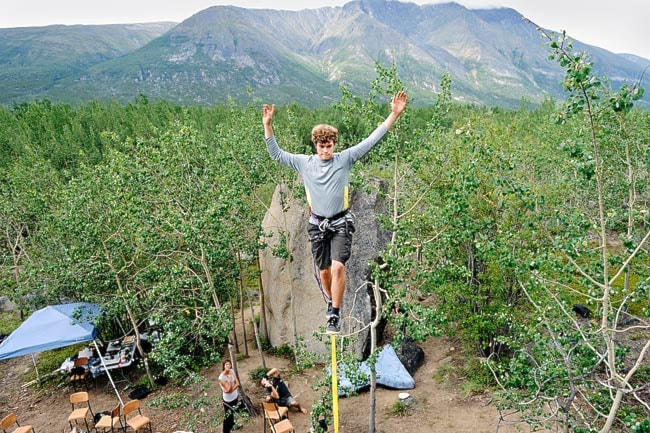The Kwanlin Dun First Nation broke new ground yesterday.
First, with the ceremonial turning of soil for a cultural centre that will feature Whitehorse’s new public library, and later, with the unveiling of a 181-kilogram dugout canoe built by 19 Sundog carvers this summer.
Nearly 100 people gathered at the foot of Black Street and First Avenue at noon on Wednesday for the launch of the Kwanlin Dun First Nation Cultural Centre.
“Aren’t we in a moment in history – to see the government working with First Nations’ government,” said Grand Chief of the Assembly of First Nations Shawn Atleo, who was in town for the event.
“Our people are rising up again, to a place our ancestors once knew.”
The 3,700-square-metre centre, expected to be complete in late 2011, is being hailed as a building that will strengthen and reinforce Kwanlin Dun culture.
“This centre will enhance our people and enliven the practise of our culture. It will revitalize our language and respect for our people,” said Kwanlin Dun Chief Mike Smith.
Planning for the centre has been in the works since 2001, and since then, the Yukon government has promised $7.4 million for the project.
The cultural centre will feature a longhouse capable of fitting 1,000 people, gallery space, an elders’ lounge and several other meeting spaces.
The main branch of the Whitehorse Library will also move from its small, cramped location on Second Avenue to two floors at the centre. The new library will resemble the white clay bluffs along the river.
The centre will also house the nine-metre-long cedar canoe presented by Sundog carvers at Wednesday’s ceremony.
Because of less-than-ideal weather conditions and a swift river current, the carvers weren’t able to paddle the canoe down the Yukon River as they had planned.
However, they did shoulder the ponderous craft to the riverbank, where a crimson flag was raised and Tlingit dancers performed a traditional welcome.
“Too long our people have suffered,” said Smith. “With this canoe we can begin to heal.”
“I’m going to read you something I wrote six years ago,” said master carver Wayne Price, who mentored the 19 youth, helping them transform a 544-kilo log into the Tlingit-style canoe.
He then recited from a journal entry made after a sweat lodge ceremony in which he was struck with the idea for the healing canoe project.
“Much has changed in the last 150 years, but still my people suffer from booze, drugs and a loss of identity,” he said.
“Once we were warriors, now what is left?”
Price, who recovered from a life of drug and alcohol abuse himself, drew from his own struggle to illustrate the extreme challenges aboriginal people have faced.
The key to sidestepping this pain is to pass along traditional knowledge and culture to young people, he said.
“I feel the dugout canoe is part of a key to our past,” said Price, who stressed the importance of art in celebrating First Nation culture.
The youth who took part in the dugout canoe project pledged to stay alcohol and drug free for the duration of the six weeks. They lived in tents on an island without any distractions from cellphones, iPods or computers.
After chipping away hundreds of pounds of cedar from the canoe, the youth wrote the names of people they’d lost to drugs and alcohol on the curled scraps of wood.
“We burned the cedar chips for four days and nights, that’s how long we kept the fires going,” said Price.
See video at http://yukon-news.com/multimedia/video/14099/
Contact Vivian Belik at vivianb@yukon-news.com
